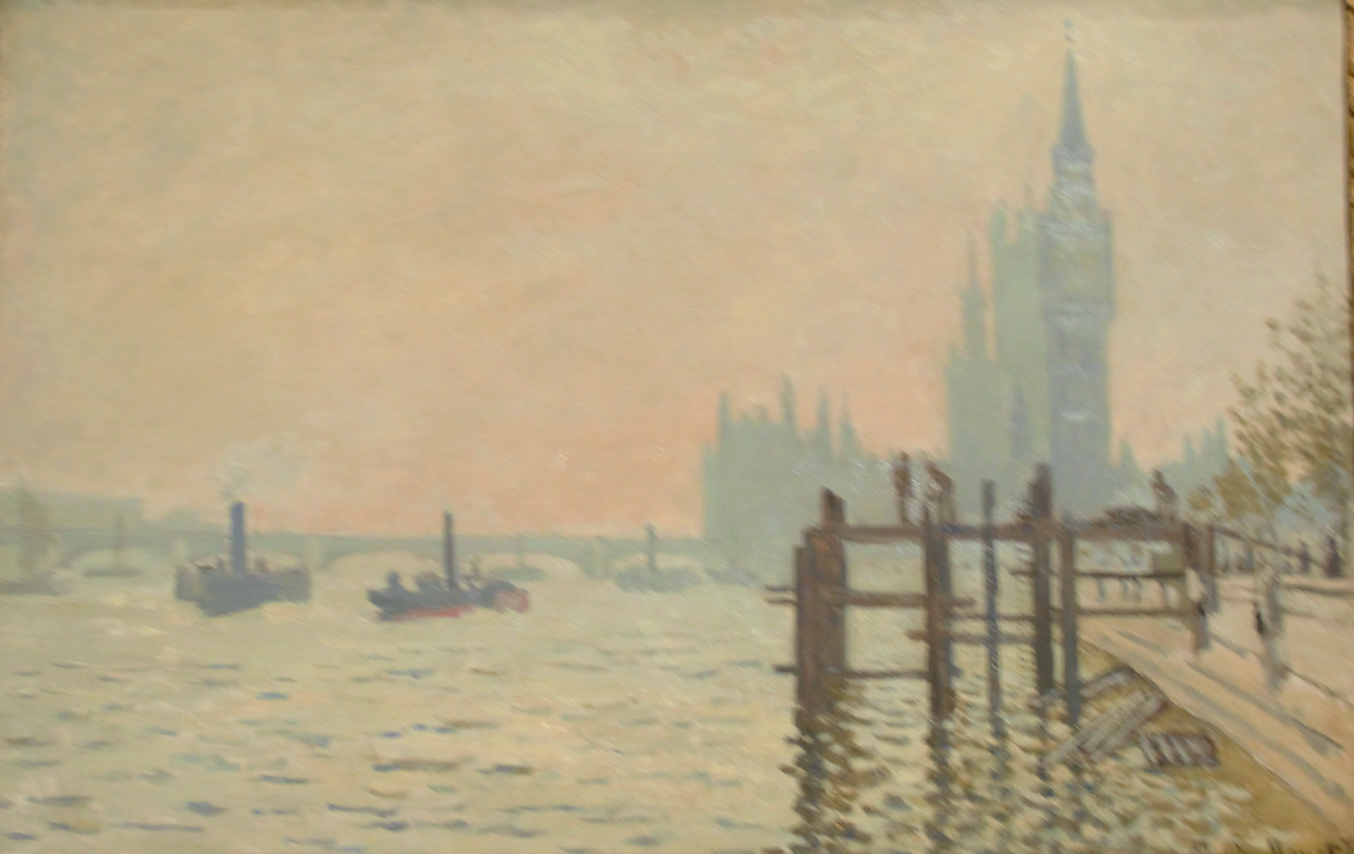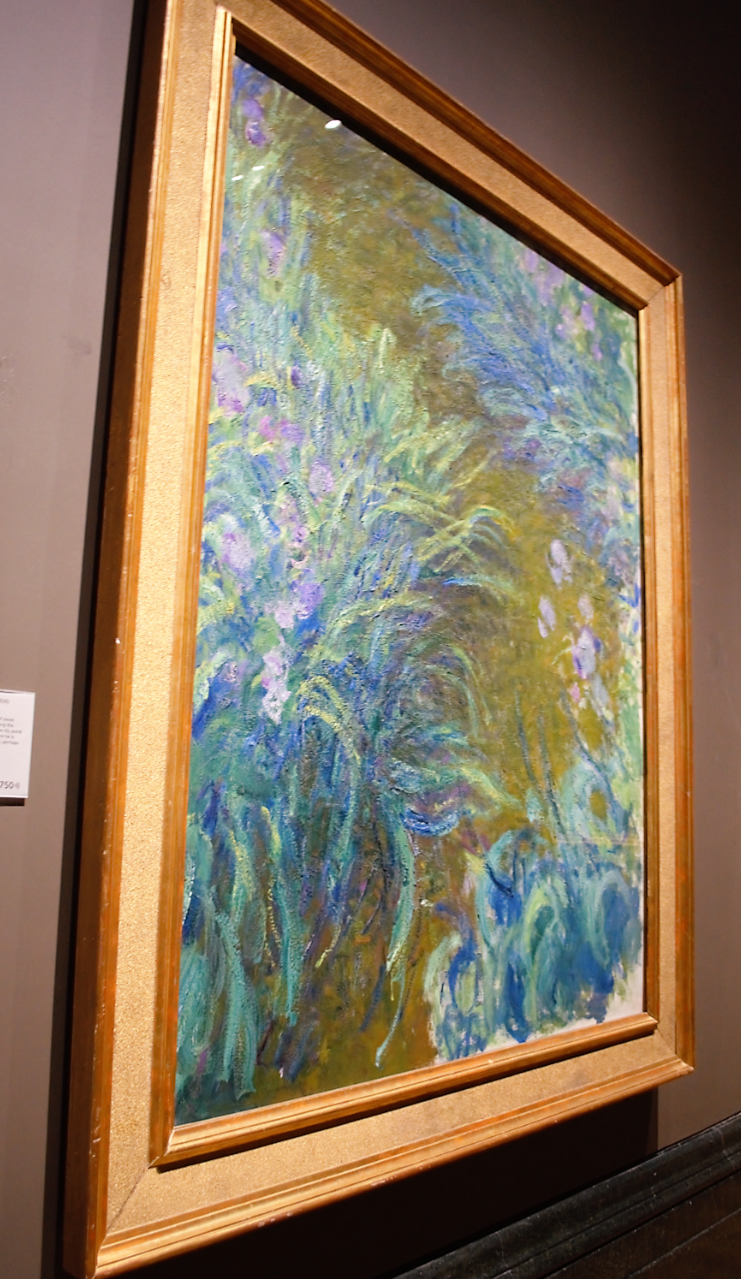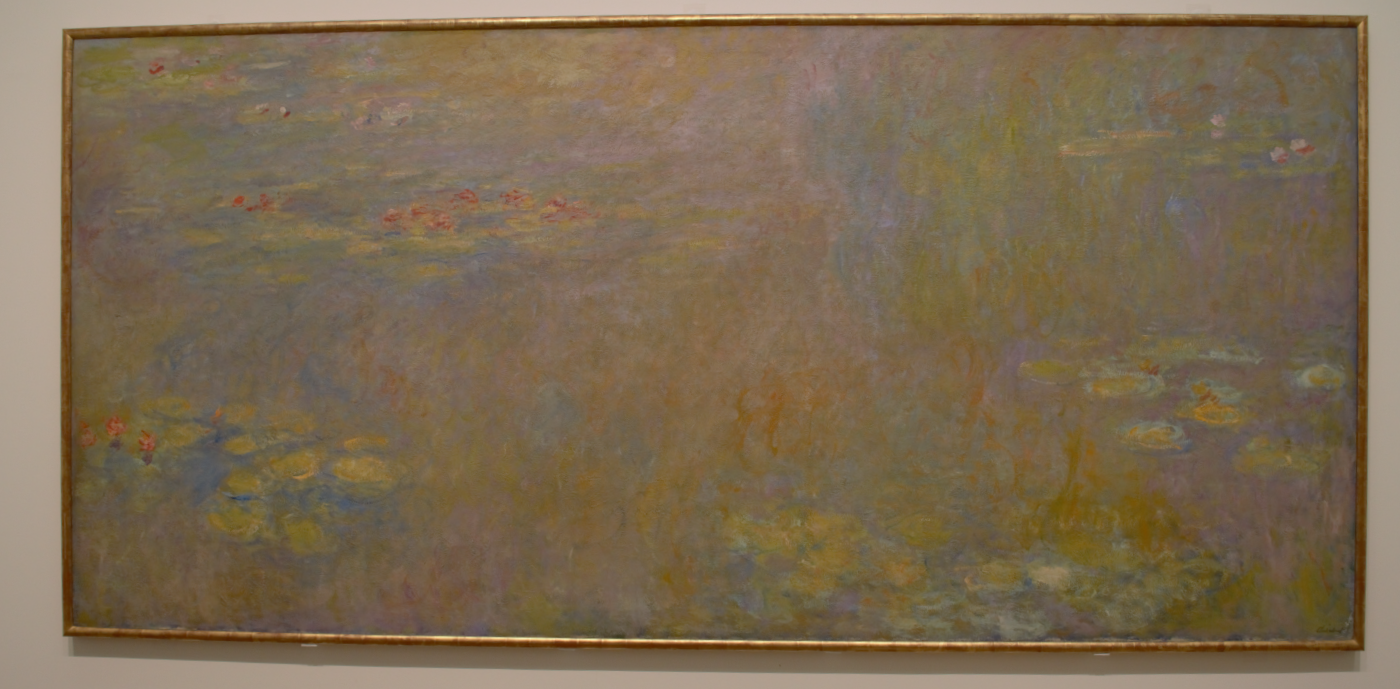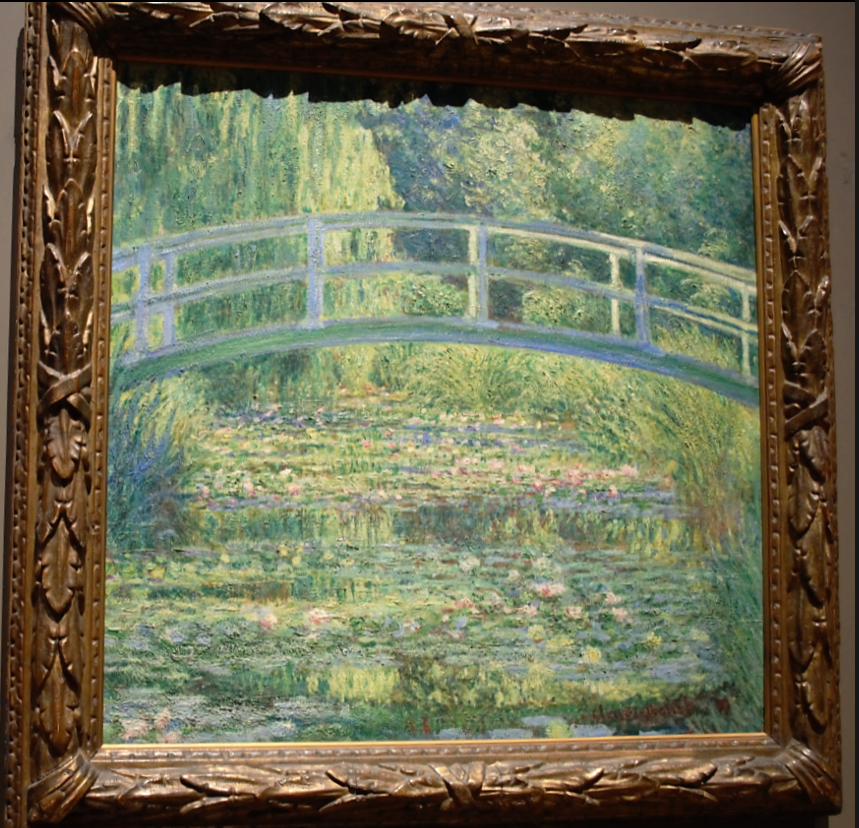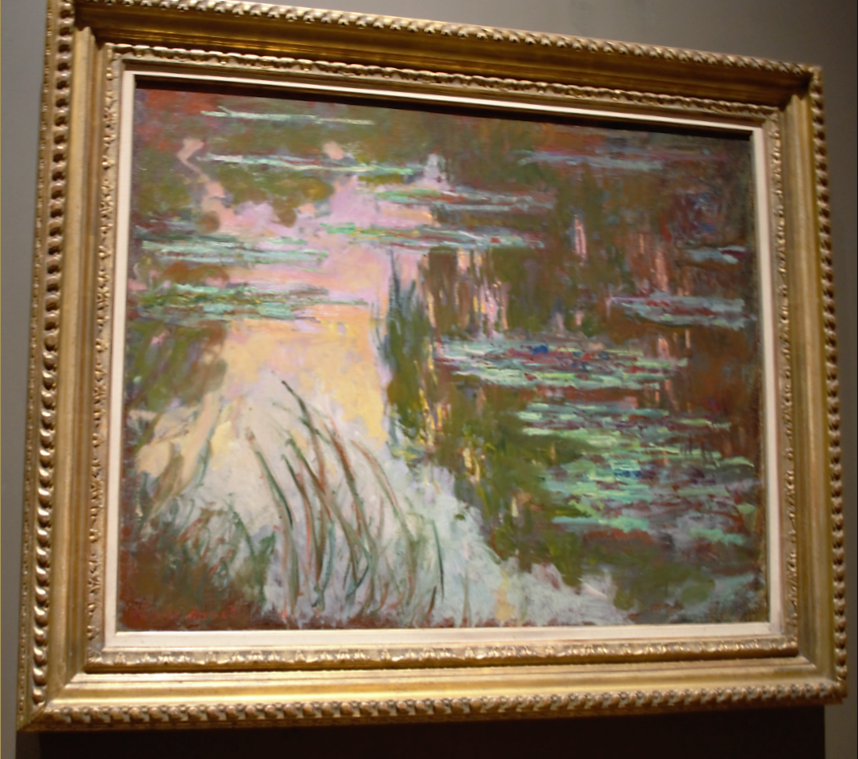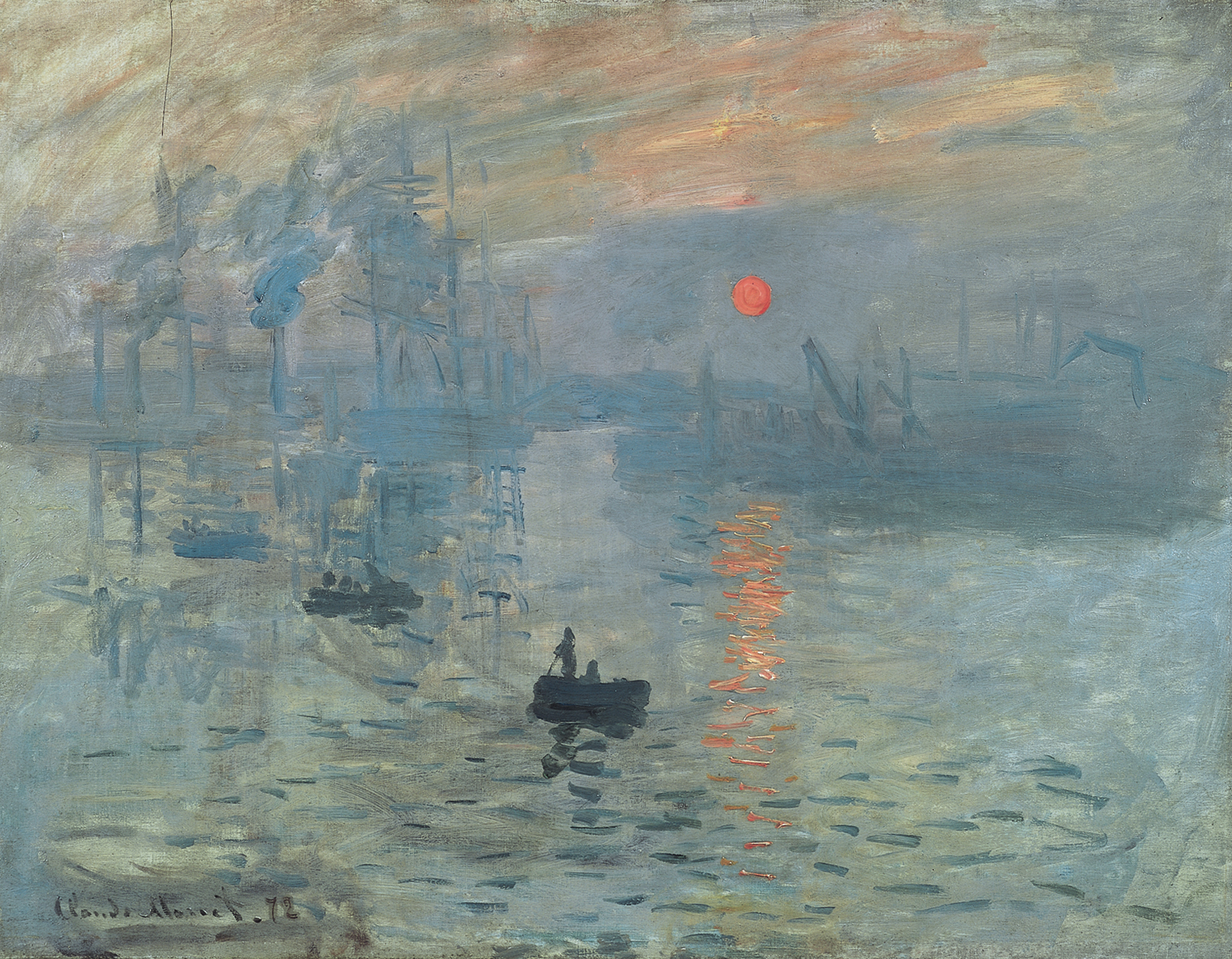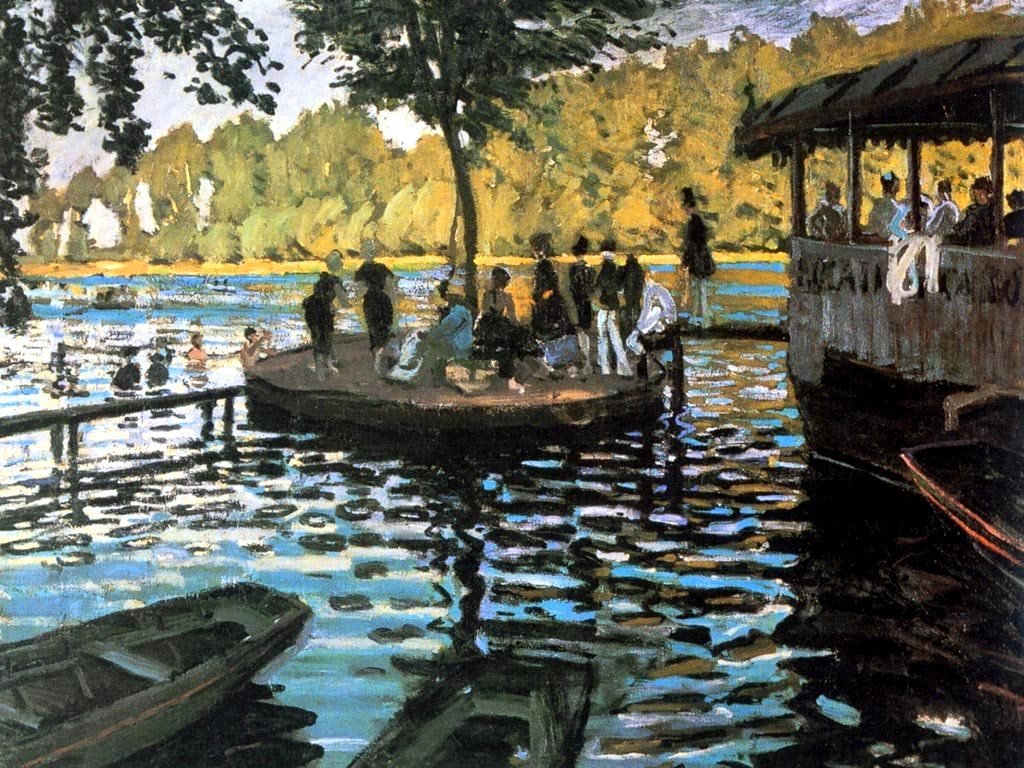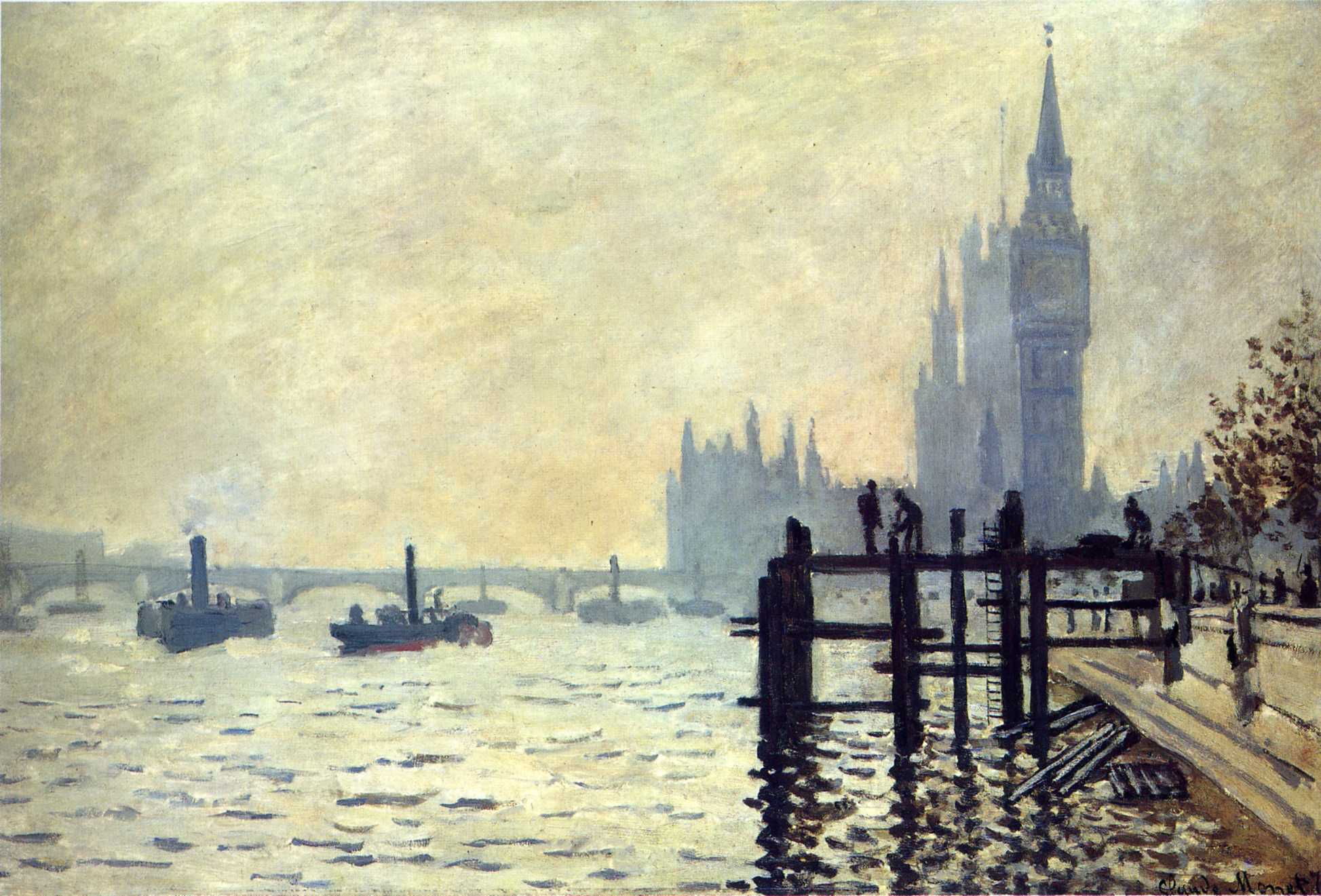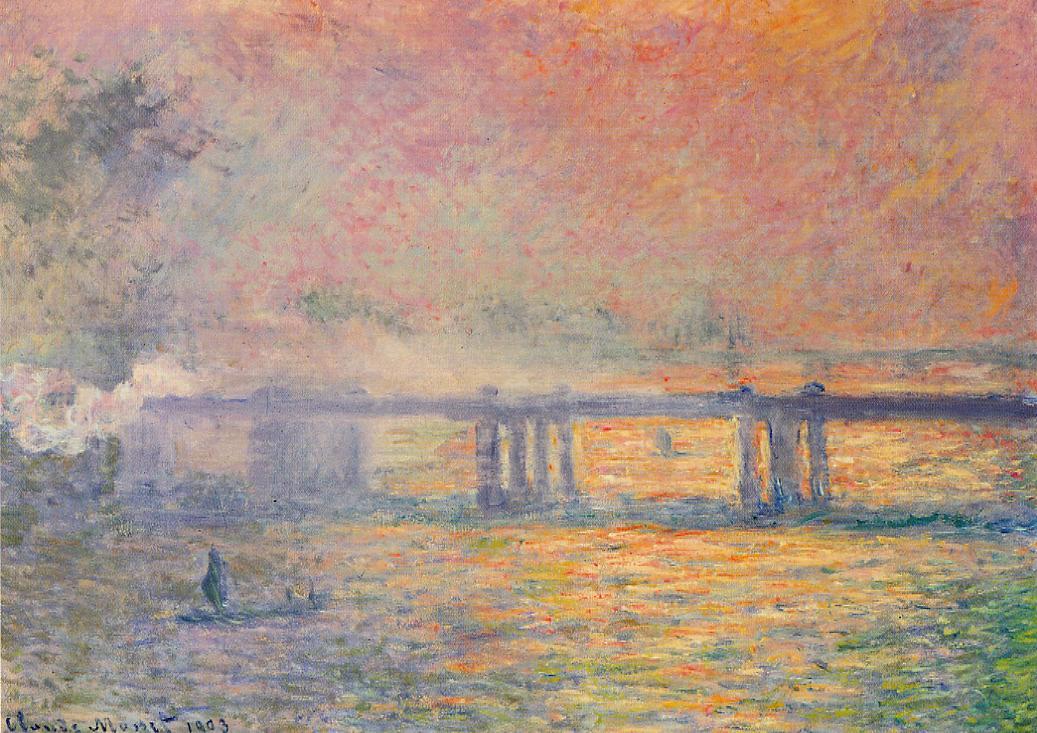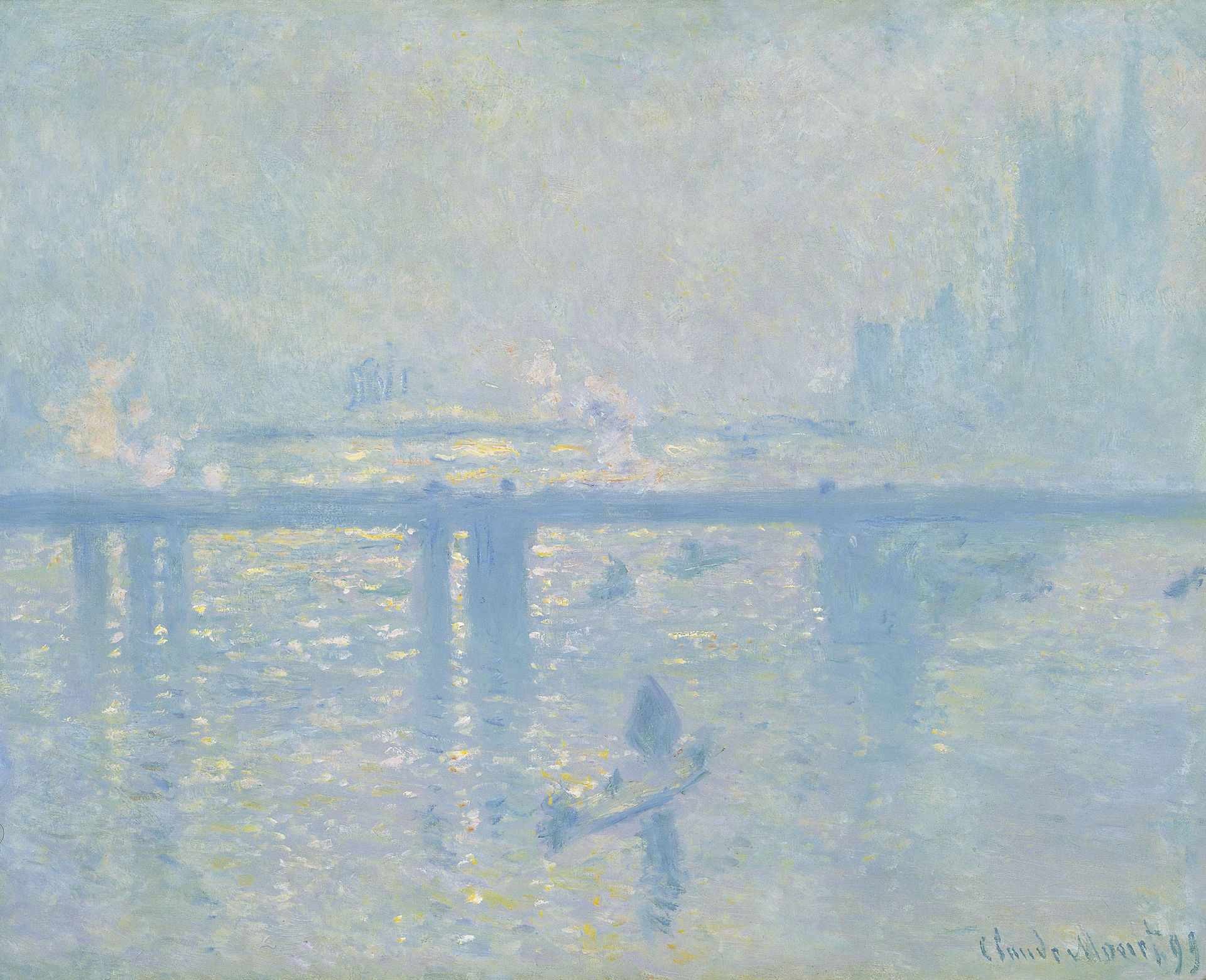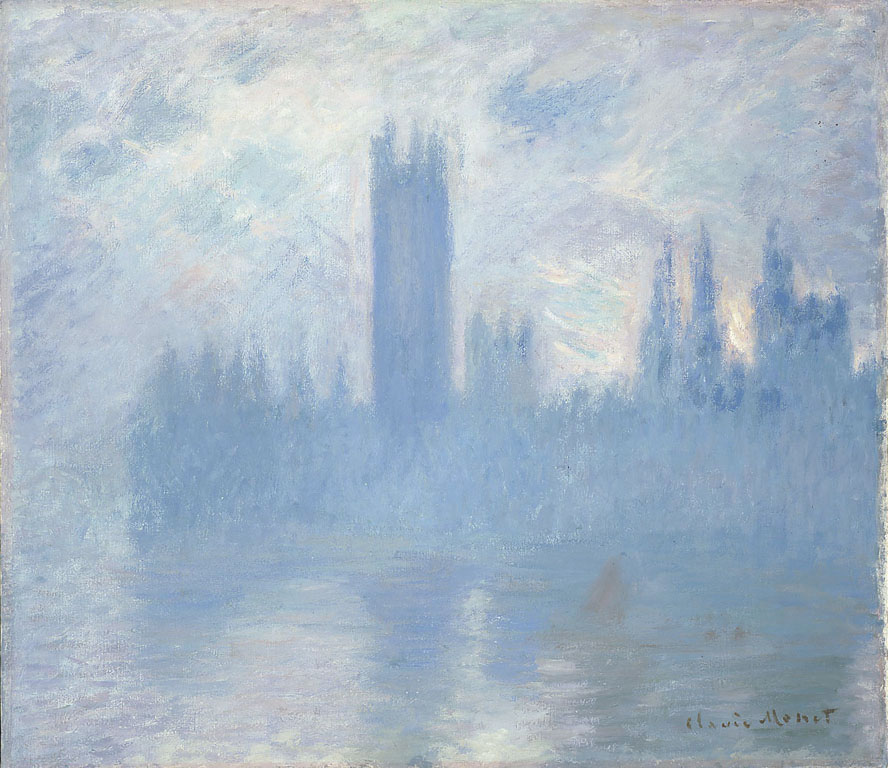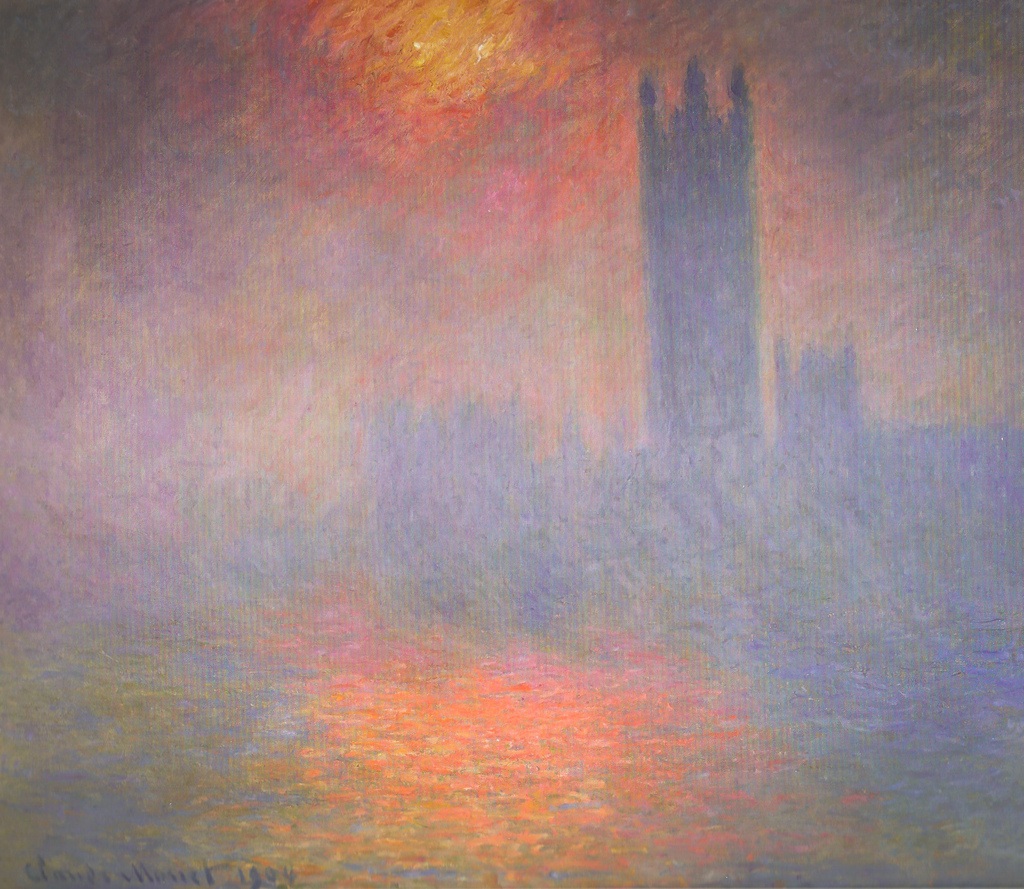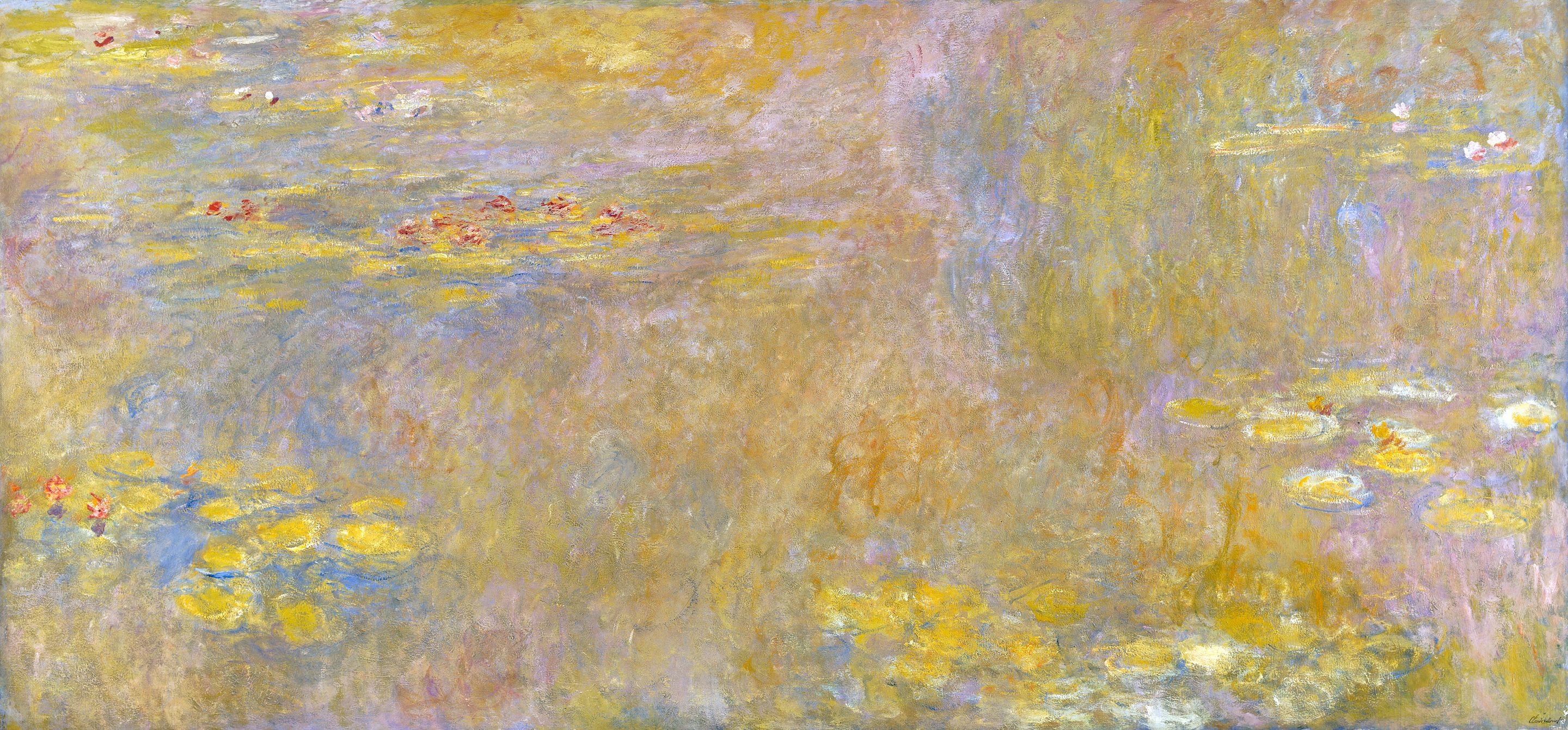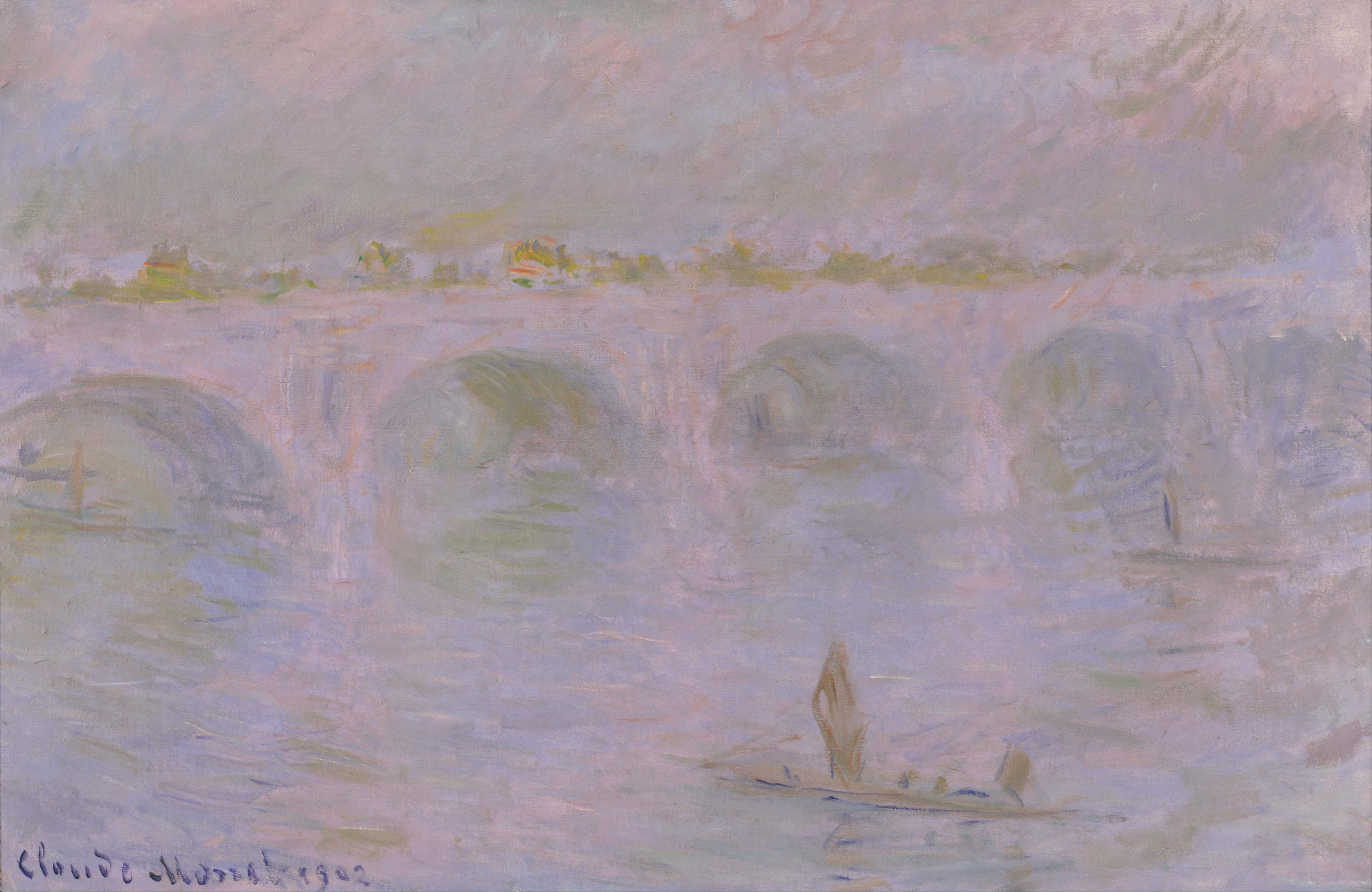Difference between revisions of "Adding Pigment 2.0"
From Londonhua WIKI
| Line 5: | Line 5: | ||
During his time in London, he painted many of its landscapes and buildings at different times of the day as he was known for. He painted many views from the Thames including Parliament and Westminster. His short stay in London resulted in the largest series of paintings that he had yet produced. <ref> CORTON, C. L. (2015). LONDON FOG: the biography. S.l.: BELKNAP HARVARD. pp 182. </ref> Monet, as many artists admired the London fog. As Christine Corton said in her book ''London Fog'' in page 184 Monet commented " Without the fog, London wouldn't be a beautiful city... It's the fog that gives it it's magnificent breadth". I believe that he was intrigued by the fog as it went alongside this style. The fog was not traditional to him as he never saw it before in any French city. He portraits the fog as part of the landscape or the impression of the landscape which also gave him originality. | During his time in London, he painted many of its landscapes and buildings at different times of the day as he was known for. He painted many views from the Thames including Parliament and Westminster. His short stay in London resulted in the largest series of paintings that he had yet produced. <ref> CORTON, C. L. (2015). LONDON FOG: the biography. S.l.: BELKNAP HARVARD. pp 182. </ref> Monet, as many artists admired the London fog. As Christine Corton said in her book ''London Fog'' in page 184 Monet commented " Without the fog, London wouldn't be a beautiful city... It's the fog that gives it it's magnificent breadth". I believe that he was intrigued by the fog as it went alongside this style. The fog was not traditional to him as he never saw it before in any French city. He portraits the fog as part of the landscape or the impression of the landscape which also gave him originality. | ||
| + | The pigment Monet added was his originality and how his panted the same thing many times | ||
| + | eventhough it was the same lanscape you feel it it as a completely different enviroment the different use of light nad color palettele made Monet the irrefutable fame he currently has. who he is | ||
<gallery mode="packed-hover" heights="180"> | <gallery mode="packed-hover" heights="180"> | ||
File:MM1.PNG|''The Thames below Westminster''<br> | File:MM1.PNG|''The Thames below Westminster''<br> | ||
Revision as of 21:38, 19 June 2017
Monet
Claude Monet was a French artist of the Impressionist movement. This movement was named after one of his paintings called Impression, Sunrise. This is because you can only see an impression of the sunrise and the person in it. The viewer has to analyzed, assume and connect the dots to figure out the painting. This is not exactly abstract art but it is definitely different from traditional art at that time. Monet had many artists as inspiration and started with no knowledge of art. He became to be known one of the best-known artists in the world. His purpose was to overcome tradition and use intense brushstrokes to create an impression of a painting. He started painting in Paris and many scenes of the Seine river. He painted impressions of landscapes of the place he lived in at different times of the day. We can clearly see this in one of his biggest collection of paintings Water Lilies that he painted when he was living in Givenchy. Monet moved a lot during his life mainly within France, however, during the Franco-Prussian War, he moved to London for two years. [1]
During his time in London, he painted many of its landscapes and buildings at different times of the day as he was known for. He painted many views from the Thames including Parliament and Westminster. His short stay in London resulted in the largest series of paintings that he had yet produced. [2] Monet, as many artists admired the London fog. As Christine Corton said in her book London Fog in page 184 Monet commented " Without the fog, London wouldn't be a beautiful city... It's the fog that gives it it's magnificent breadth". I believe that he was intrigued by the fog as it went alongside this style. The fog was not traditional to him as he never saw it before in any French city. He portraits the fog as part of the landscape or the impression of the landscape which also gave him originality.
The pigment Monet added was his originality and how his panted the same thing many times eventhough it was the same lanscape you feel it it as a completely different enviroment the different use of light nad color palettele made Monet the irrefutable fame he currently has. who he is
Water Lilies at Tate Modern
Christopher Wren
"Christopher Wren (1632-1723) was the greatest architect Britain has ever known" [3] London and its skyline wouldn't be as we know them nowadays if it wasn't for Cristopher Wren. After the Great Fire of London, he was appointed to reconstruct many churches. St Paul was his biggest work with his design of the dome.
[4]
As Lisa Jardine said in her book about Wren called On a grander scale: The outstanding life of Sir Christopher Wren, Wren was a versatile genius who could have pursued a number of brilliant careers with equal virtuosity. A mathematical prodigy, an accomplished astronomer, a skillful anatomist, and a founder of the Royal Society", Wren was a genius. Just as
, he eventually made a career in what he described disparagingly in later life as "Rubbish" - architecture, and the design and construction of public buildings. Wren was a major figure at a turning point in English history. He mapped moons and the trajectories of comets for kings; lived and worked under six monarchs; pursued astronomy and medicine during two civil wars; exercised his creativity through the English Commonwealth, the Great Fire, the Restoration. His royal employment outlasted abdication, Dutch invasion, and the eventual extinction of the Stuart dynasty. Beyond the public achievements, Jardine explores Wren's personal motivations and passions. He was a sincere, intensely moral man with a remarkable capacity for friendship. His career was shaped by lasting associations forged during a turbulent boyhood and a lifelong loyalty to the memory of his father's master and benefactor, the "martyred king," Charles I. Everything Wren undertook, he envisaged on a grander scale - bigger, better, more enduring than anything that had gone before"
Trash
Monet
Oscar-Claude Monet (14 November 1840 – 5 December 1926) was a founder of French Impressionist painting, and the most consistent and prolific practitioner of the movement's philosophy of expressing one's perceptions before nature, especially as applied to plein-air landscape painting. The term "Impressionism" is derived from the title of his painting Impression, soleil levant (Impression, Sunrise), which was exhibited in 1874 in the first of the independent exhibitions mounted by Monet and his associates as an alternative to the Salon de Paris.Claude Monet's paintings are among the most well known and the widely enjoyed works of art in the world. His pictures of the French landscape in radiant sunshine have captured the imagination of our age, and have often been taken to exemplify the twentieth century's favorite a movement, Impressionism. It has also been frequently assumed that such sun-filled canvases were produced by an equally sunny and artist, and Monet himself has not been subjected to same scrutiny as some of his more troubled contemporaries. During much of his lifetime Monet encourage this tendency, insisting on his right to privacy and refusing to indulge in theoretical speculations about his art. [5] He presented himself in many different guises through his long career and he had many changing opinions and feelings. For example, he was a really loyal friend but he could be very selfish at times and he could be a very conversationalist at times but other times he could be truculent. His art was affected by all this and his moods. Monet’s life revolved around his art.
Monet was born in Paris in 1840 in a region of 'good' Louis -Philippe, in an environment entirely dedicated to commerce. [6]. At a very young age his family moved to Le Havre. His mother died a few years after they moved. He was undisciplined and never followed the rules. He changed until he was fourteen when his art began. He drew flower in the margins of his papers and drew caricatures of his professors. He became famous all over Le Havre as a caricaturist. He was introduced to a low repute artist back then called Bouldin. He studied with him, analyzing forms and colors. He decided to become a painter. Monet wanted to go back to Paris to pursue his passion for art and his aunt Marie-Jeanne Lecadre helped him. He had an allowance with the condition to study art. He had a gregarious youth leading the Bohemian life in Paris. However, because of his behavior his family withdrew any financial aid. He went into military service to Algeria. He mentions how this changed his life. He saw the impression of light different after this service. He returned to Paris where he meet Camille Doncieux and in 1867 they had their first son together. He was penniless so went back to Le Havre with his new family. It was not easy but they found a home and got married. They had their weeding in Paris in summer of 1870, but that autumn the Franco-Prussian War and the treat of conscription persuaded them to flee to coastal resort of Trouville. later on they took refugee in London. They returned to France though Holland and moved around the county. Many of this locations where near the Seine River. Camille had a second child and shortly died. He was now in the company of Alice Hoschede. In 1883 Alice and her six children and Monet and his two children moved to Giverny, a small village overlooking water near the Seine. He purchased a house and property and began a vast landscaping project which included lily ponds that would become the subjects of his best-known works.He was a patriarch of his family. Later in his life, he preferred to have privacy in the gardens at Giverny where he found freedom. [7]
- His short stay in London resulted in the largest series of paintings that he had yet produced.
Tate Modern 1916
Avant Garde=
You have to analyze the painting and interpret what Monet wanted to express. This exactly what Monet and most Impressionists wanted, to
- ↑ Monet, C., & Kendall, R. (2003). Monet by himself: paintings, drawings, pastels, letters. Boston: Little, Brown, Chapter 1.
- ↑ CORTON, C. L. (2015). LONDON FOG: the biography. S.l.: BELKNAP HARVARD. pp 182.
- ↑ Tinniswood, A., & Graham, N. (2005). His invention so fertile: a life of Christopher Wren. London: Royal National Institute of the Blind.
- ↑ Jardine, L. (2004). On a grander scale: the outstanding life and tumultuous times of Sir Christopher Wren. New York, NY: Perennial.
- ↑ Monet, C., & Kendall, R. (2003). Monet by himself: paintings, drawings, pastels, letters. Boston: Little, Brown..
- ↑ Denvir, B.(1987). The Impressionists at First Hand: Thames and Hudson.
- ↑ http://www.tate.org.uk/art/artists/claude-monet-1652
